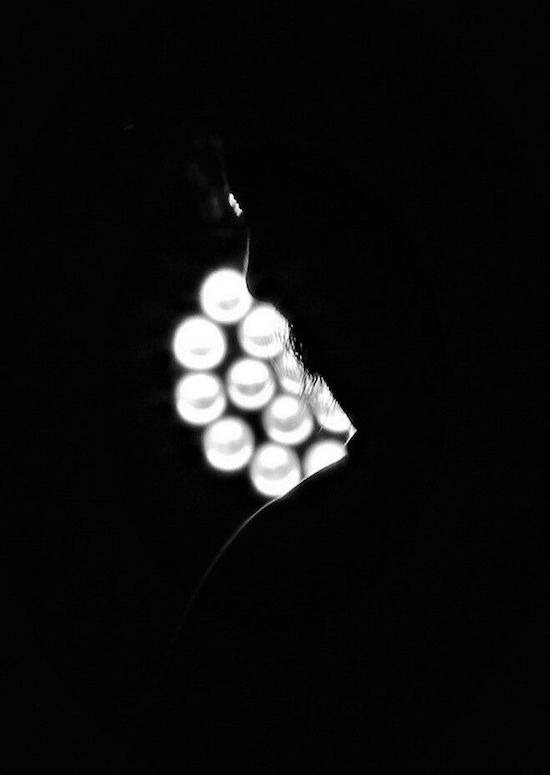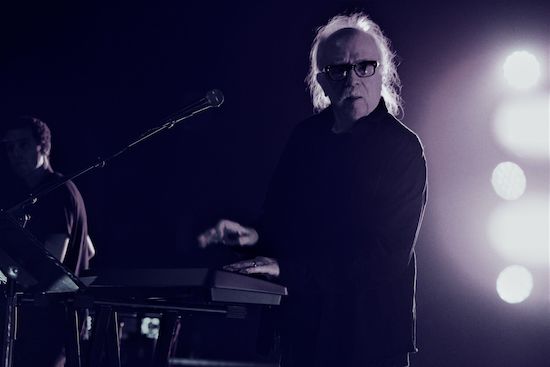Live photography kind courtesy of Mark Mawston
Everyone will have their favourite John Carpenter movie, ours is Escape From New York. Or perhaps Halloween. Or maybe The Thing. But then we forgot, how could we, about They Live, and yes Prince Of Darkness, let’s be honest, is also a great late film. I have a soft spot for Christine, my fellow reviewer doesn’t do soft spots, and neither of us has ever sat through Starman. We are here for the music of course, but equally like the rest of the audience (last seen together at the old Forbidden Planet on Denmark Street), we are also here to reverence Carpenter and pay tribute.
The set opens with Escape From New York and we’ve landed in Carpenter’s Hobbsian battleground of American 70s and 80s decline, in which social strife is everywhere. The suburbs are a pristine hell of boredom and repression that breed violent impulses and revenge fantasies, invaded from within by their dark and unkillable mutant offspring. Meanwhile the urban centres have collapsed into invigoratingly lawless dystopian zones, in which life is growing cheaper on a minute by minute basis; a toxic stew of license and decay in which history returns to wreak its revenge on anyone naive enough to believe in progress or the perfectibility of humankind.
Carpenter’s great, virtually unprecedented, run of movies through to They Live are defined by their post-ness: post hippy, post oil shock, post-Watergate, post deference, post optimism; films that emerge from the crisis of the Seventies and that have one proto-punk, subversive eye on detourning the 70s reclamation of earlier cinematic traditions, icons and epochs (and both ears, via the synthesizer), into the future. This is the nature of Carpenter’s enduring allure, his corruption and cynical pastiching of the ways in which his contemporaries, Spielberg and Lucas, re-enchanted cinema in the 70s. Carpenter is there to disenchant, Dark Star versus 2001, Halloween versus American Graffiti, Escape versus Raiders, The Thing versus E.T., eternal darkness versus light.
Ultimately the movies are all post-optimism, post-futurity in all but that one crucial regard – the music. It’s hard to imagine now, but at the time electronic music was strongly associated with the arty, europhile sensibilities of auteurs like Kubrick, Mann or Friedkin, whose inspired excerpting of Mike Oldfield’s Tubular Bells in the Exorcist, influenced Carpenter’s equally famous Halloween theme. Mann and Friedkin used Tangerine Dream in Sorcerer and Thief, Kubrick used Wendy Carlos, but the cold fusion of euro synth modernism and American comic book po-mo is uniquely Carpenter’s own, the soundtrack to a home-grown, DIY genre sensibility at odds with the both the arthouse and the new mainstream, but partaking of both. Innovators were quick to notice his innovations and by the early nineties Carpenter had already been sampled by dance and rap (Bomb The Bass’ ‘Megablast’ and Ice T’s ‘The Tower’), while his stamp is now all over everything from contemporary electronica to the Drive soundtrack.

Carpenter’s music from the Lost Themes is for die-hard fans only, they are efficiently brooding and minimal, the soundtrack no doubt to some imaginary movie constructed in the mind’s eye, but shorn of association with the canon they stand largely as filler, a reprieve while we wonder what’s up next. There are a lot of people on stage but not a huge weight to the sound. This hardly matters though; this is another gig that, as we culturally age, has more to do with the aforementioned reverencing than anything else. This kind of show is pitched somewhere in attitude and ambience between the convention and the lifetime achievement section of an award show, a montage of greatest moments while the artist soaks up the applause, more a valedictory lap of the stadium than a tour. Inevitably, they carry certain poignancy, both for the artist’s advancing age, the appreciation of a younger age group, and the mourning of a past that allowed space for such wayward figures to uncompromisingly express their impulses. In a sense they are rituals of memorialization and it’s this complex combination of affects and associations that are triggered by the different tracks, thrilling but melancholy, part nostalgia for our own lives, part for a lost time and set of possibilities.
Halloween comes in one track before the end of the set. Hair goes up on the back of necks, people cheer, Michael Myers stalks and slashes on the back projection. Maybe that’s Carpenter’s great work we decide, but then, there’s the next track of course, and how could we have forgotten The Mouth Of Madness?
Halloween Original Soundtrack is out now on Sacred Bones


